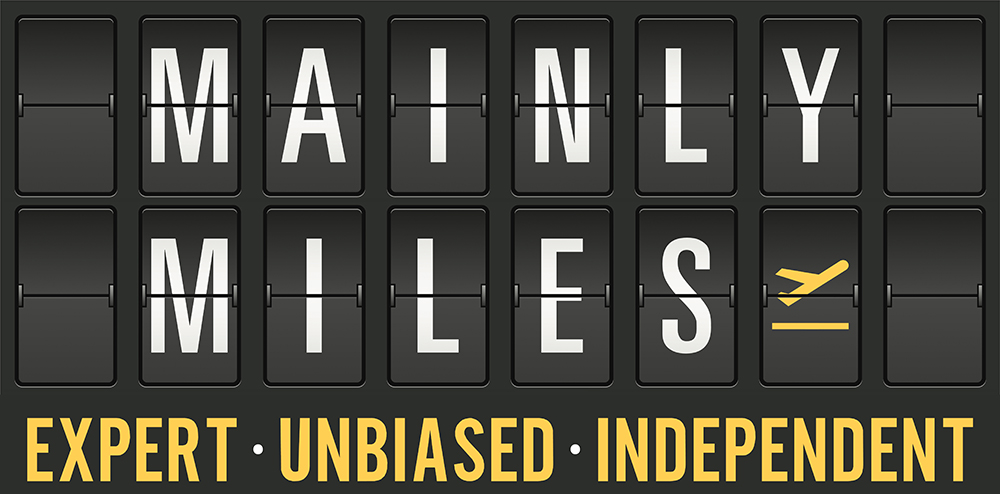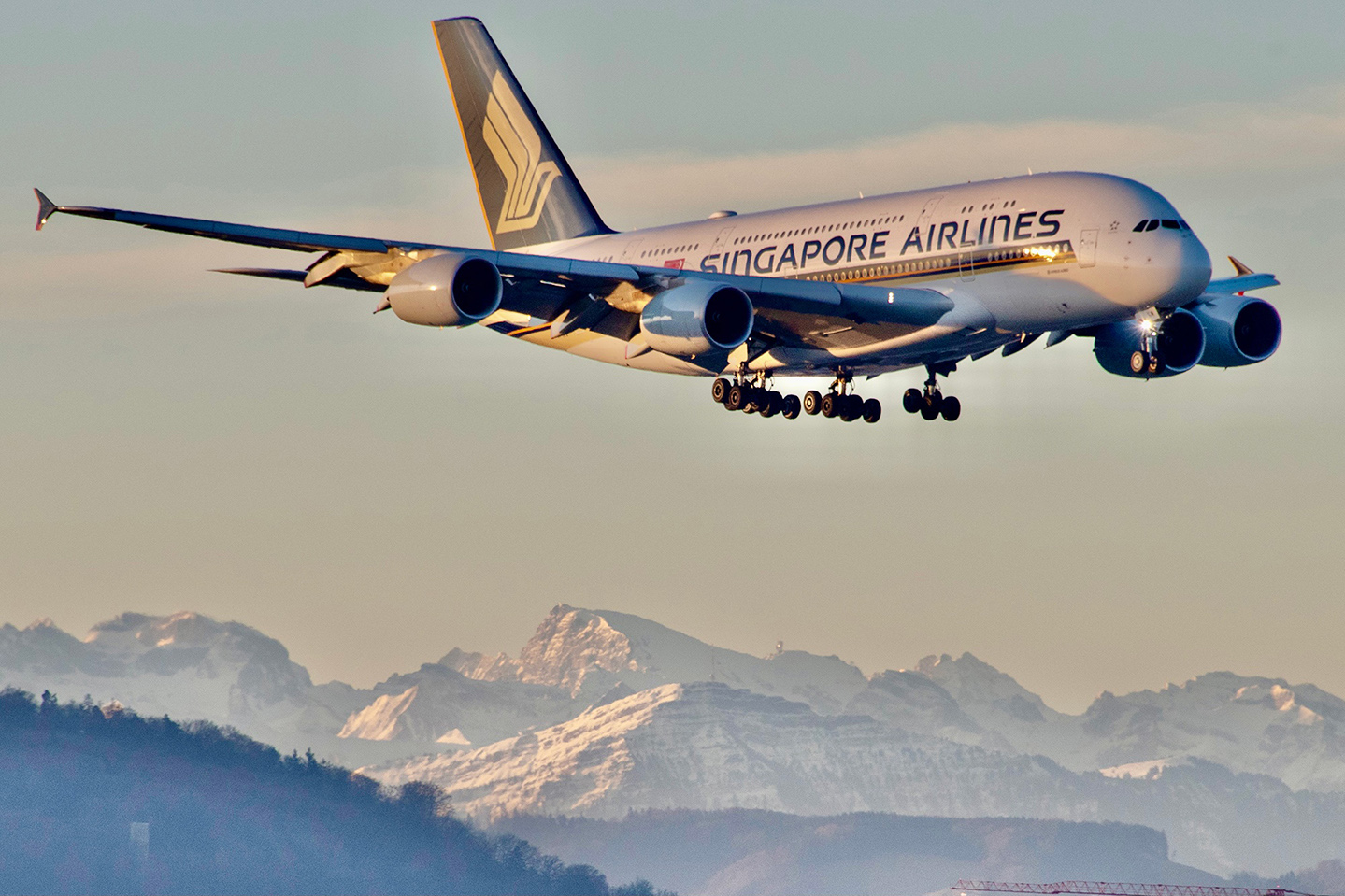Singapore Airlines revealed some sad though not unexpected news today, when it confirmed that seven of its flagship Airbus A380 aircraft will not be returning to the fleet as part of the COVID-19 pandemic recovery, shrinking the carrier’s superjumbo total by over a third.
The announcement was made as part of the airline’s half-year results update, which also revealed continuing net losses in the second quarter of the financial year totalling S$2.3 billion, for a half-year net loss of S$3.5 billion.
SIA had already primed us for news about the future of the Airbus A380 fleet as part of its network review at the last financial update, stating that the carrying value of these older aircraft was likely to result in a material impairment of around S$1 billion.
In addition, 19 other aircraft will be retired from the fleet, leading to a total impairment charge of S$1.3 billion, comprising:
- 4 Boeing 777-200 / -200ERs
- 4 Boeing 777-300s (non-ERs)
- 9 Airbus A320s
- 2 Airbus A319s
Airbus A380 retirements
While SIA has not specified which aircraft in particular will be leaving the fleet, it almost inevitably involves the six oldest Version 1 aircraft, ranging from 11 to 13 years old, and likely at least one of the Version 2 aircraft, which are between 9 and 10 years old.
Singapore Airlines Airbus A380 Fleet
 |
|||
| Aircraft | Current Location |
Version | Age (years) |
| 9V-SKF | SIN | V1 | 12.7 |
| 9V-SKG | SIN | V1 | 12.0 |
| 9V-SKH | SIN | V1 | 11.9 |
| 9V-SKI | SIN | V1 | 11.8 |
| 9V-SKJ | SIN | V1 | 11.8 |
| 9V-SKK | ASP | V1 | 11.2 |
| 9V-SKL | SIN | V2 | 10.3 |
| 9V-SKM | SIN | V2 | 10.3 |
| 9V-SKN | SIN | V3 | 10.0 |
| 9V-SKP | ASP | V2 | 9.4 |
| 9V-SKQ | ASP | V2 | 9.1 |
| 9V-SKR | SIN | V2 | 9.2 |
| 9V-SKS | SIN | V3 | 8.9 |
| 9V-SKT | ASP | V3 | 8.8 |
| 9V-SKU | SIN | V3 | 3.6 |
| 9V-SKV | SIN | V3 | 3.4 |
| 9V-SKW | ASP | V3 | 3.1 |
| 9V-SKY | ASP | V3 | 2.8 |
| 9V-SKZ | ASP | V3 | 2.7 |

There is no feasible way the airline can write down the carrying value of its five newest Airbus A380s, ranging from 2.7 to 3.6 years old, given the huge financial hit that would be involved.
Withdrawing the three A380s the airline has recently refitted with the new cabin products, a process rumoured to cost S$45m per jet due to the complex reconfigurations required, would also result in a substantial impairment cost.
That’s because the airline was likely amortising the outlay for those refits over perhaps a 5 to 10-year period.
The good news therefore is that the aircraft with the latest 2017 Business Class and Suites products should be retained in the post-COVID fleet.

History of the SIA A380
Singapore Airlines was the launch customer for the Airbus A380 thirteen years ago in October 2007, taking delivery of the first of 24 such aircraft it would eventually order. The airline already returned its oldest five aircraft on expiry of their operating leases, the oldest pair of which were scrapped in 2018.
This fresh and premature retirement announcement will come as sad news to many travellers, who have great affinity for the Airbus A380 due to its quiet, spacious cabins.

Unfortunately the aircraft has fallen out of favour with airlines over recent years due to its high operating costs, partly arising from significant fuel burn compared to more efficient twin-engined jets like the Airbus A350 and Boeing 787.
Fun fact: According to ICAO data, an Airbus A380 typically uses around 193,000kg of fuel to fly from Singapore to Frankfurt (410kg per passenger), while an Airbus A350-900 burns around 70,000kg on the same journey (277kg per passenger).Singapore Airlines is not alone of course, with other Airbus A380 operators including Air France and Lufthansa permanently retiring most if not all of their respective superjumbo fleets. Qatar Airways has also publicly stated that its 10 aircraft may never fly again.
Worldwide around 90% of the type is in storage, including all of SIA’s A380s, seven of which are in a long-term facility at Alice Springs Airport, Australia (though as mentioned, these won’t be the ones being retired; instead they are likely being preserved for reuse).

Other aircraft retirements
In addition to the seven Boeing 777-200s inherited from NokScoot following the collapse of the Thai airline earlier this year, Singapore Airlines has also confirmed that it will not return its own Boeing 777-200 and -200ER into service after COVID-19.

The airline also confirmed for the first time that its four remaining Boeing 777-300s (non-ER) will also be retired, sealing the fate of the 2009 Regional Business Class seats once remaining Airbus A330s are returned to their lessors over the next year.

Additionally, retirement of the last remaining Boeing 777-300s will spell the end of the 2006 First Class product, an eight-seat cabin in a 1-2-1 configuration since upgraded to a smaller more modern version on the Boeing 777-300ER fleet.

Finally it’s the group’s narrow-body Airbus A319 and Airbus A320 aircraft being phased out, with both of SilkAir A319’s and what appears to comprise the remaining five SilkAir A320s and probably four Scoot A320s in storage at Alice Springs up for the chop.
The A319s are:
- 9V-SBG
- 9V-SBH

The A320s are almost certainly the following five SilkAir aircraft:
- 9V-SLL
- 9V-SLM
- 9V-SLP
- 9V-SLR
- 9V-SLS
Plus are likely to be the following four Scoot aircraft, stored in Alice Springs:
- 9V-TAN
- 9V-TAQ
- 9V-TAU
- 9V-TAV
First half financials
Here are the headline financial operating results announced by the SIA Group for the first half of the financial year (Apr-Sep 2020), compared with the same period in 2019.
| H1 19/20 (S$m) |
H1 20/21 (S$m) |
Change | |
| Revenue | 8,325 | 1,634 | -80.4% |
| Expenditure | 7,912 | 3,497 | -59.8% |
| – Fuel Used | 2,425 | 218 | -91.0% |
| – Fuel Hedging Loss | -76 | 721 | nm |
| – Non-fuel | 5,563 | 2,558 | -54.0% |
| Operating Profit | 413 | – 1,863 | nm |
| Net Profit | 206 | – 3,467 | nm |
nm – not measurable
Revenue took a large hit as a consequence of the travel restrictions and limited flight schedule due to the COVID-19 outbreak.
“Group revenue declined $6,691 million (-80.4%) year-on-year to $1,634 million in the first half of the financial year. Passenger flown revenue fell sharply as Singapore Airlines, SilkAir and Scoot were severely impacted by restrictions on international travel.”
Singapore Airlines
Thankfully buoyant cargo demand managed to offset some of this imact.
“This was partially offset by stronger cargo flown revenue (up $274 million, or +28.3%) as countries sought to restore global supply chains. SIA responded to the demand by maximising freighter utilisation and deploying passenger aircraft on cargo missions.”
Singapore Airlines
Just this week Singapore Airlines has launched its first Boeing 777-300ER with cargo in the cabin in place of some passenger seats, a move first led by Scoot in August this year.
Segment results
Here are the operating profits of each group division in H1 20/21, compared to the same half in previous financial year.
| H1 19/20 (S$m) |
H1 20/21 (S$m) |
Change (S$m) |
|
| 465 | -1,260 | -1,725 | |
| -19 | -165 | -146 | |
| -77 | -414 | -337 | |
| 37 | -25 | -62 | |
| Other |
7 | 1 | -6 |
| SIA Group |
413 | -1,863 | -2,276 |
SIA Engineering in particular took a hit during the period, “due to reduction in the Group’s business activities as a result of low flight activities and massive grounding of aircraft”.
Future aircraft deliveries
The SIA Group still has large order books with Airbus and Boeing for its fleet modernisation and replacement strategy over the next few years. These comprise:

Additionally, Scoot is taking 10 Airbus A321neo aircraft through leasing companies over the coming years.
In its last update, Singapore Airlines said it was in negotiations with Airbus and Boeing to reduce its new aircraft intake, potentially spreading out this large commitment for 136 additional new aircraft across a longer time period.
This process is confirmed to be completed with Airbus in the latest financial statement, but remains ongoing with Boeing.
“The SIA Group has concluded negotiations with Airbus on a revised aircraft delivery schedule incorporating deferrals for part of the aircraft on order. Negotiations with Boeing on aircraft currently on order are at an advanced stage. These outcomes will help to moderate the aircraft delivery stream in the near term.”
Singapore Airlines
Market outlook
Here is SIA’s latest summary of the market outlook over the coming months.
“The recovery from the Covid-19 pandemic is likely to remain patchy, given the new waves of infections around the world and concerns about imported cases. Nonetheless, there are some early signs of optimism. Customers are slowly becoming more confident about air travel, given the robust health and safety measures that have been put in place by airlines, airports and governments. There are also encouraging developments in the adoption of test protocols to facilitate border opening.
“Amid the uncertain and highly volatile environment, the Group, with its portfolio of full service and low cost airlines, is ready to swiftly and decisively seize all opportunities and respond to any adverse changes that may arise.”
Singapore Airlines
Summary
Sad but not unexpected news from Singapore Airlines, confirming older Airbus A380s in its fleet will not survive the COVID-19 pandemic, in common with the situation at many other airlines across the world.

The news could probably have been worse, with even fewer A380s potentially remaining, and it’s interesting that the airline’s 27-strong Boeing 777-300ER fleet remains unscathed.
For cabin products it’s good for those of you eager to see the back of the older seats, with confirmed withdrawal of the Boeing 777-300s sealing the fate of both the 2009 Regional Business Class and 2006 First Class.
(Cover Photo: Aero Icarus)


Hey, Andrew. Thank you, do you know which routes yet will be flying the newly refurbished A380’s?
It’s too early to know at this stage when the A380s will even be back in action, but I’m sure they will prioritise the newer products on the ‘flagship’ routes as before (LHR, SYD, etc)
FRA????? Please!
Looks like there will be alot lesser First Class/Suites product for the next few years with these retirements, at least until the new B777s which I don’t believe will come with full Suites like the A380s.
I kinda had the feeling that Singapore Airlines would retire some of their older Airbus A380s. The upcoming Boeing 777-9s will most likely be their replacement, considering that with just two engines, the Boeing 777-300/ERs are more fuel-efficient.